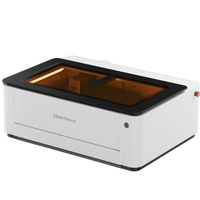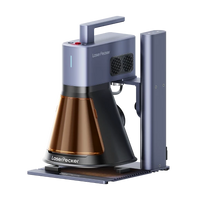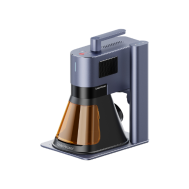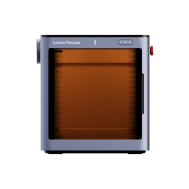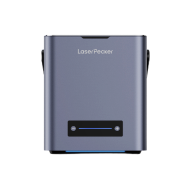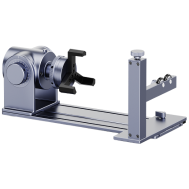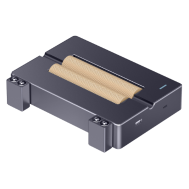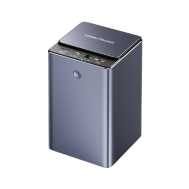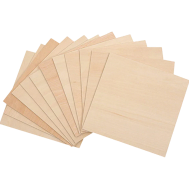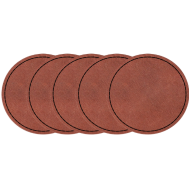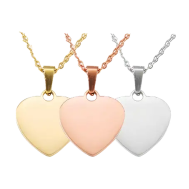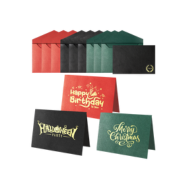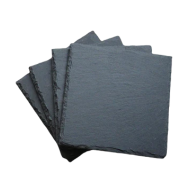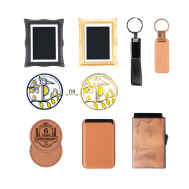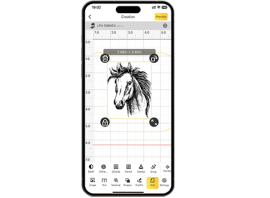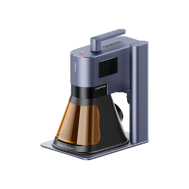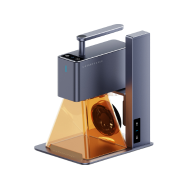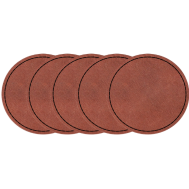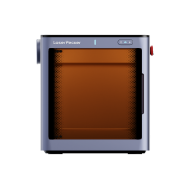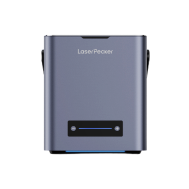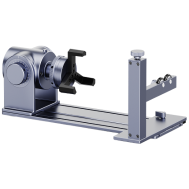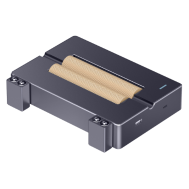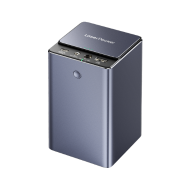Laser technology has opened up new creative possibilities, and one of the most exciting techniques is wood embossing—a process that uses grayscale files to create raised or sculptural textures directly on the wood surface. With the right settings and equipment, you can create intricate, dimensional designs that appear hand-carved—without ever touching a chisel.
In this blog, you will learn what wood embossing is, how it differs from traditional engraving, and how to do it step by step using a laser engraver.

In this article:
- Part 1: What is wood embossing?
- Part 2: Which wood is best suited for laser embossing?
- Part 3: Step-by-step instructions for wood embossing with the LaserPecker LP5
- Part 4: Achieve a 3D effect on wood through deep laser engraving
- Part 5: How to properly clean and polish wood after embossing
- FAQs: Frequently asked questions about wood embossing
Part 1: What is wood embossing?
Wood embossing is a process that creates a distinctive (3D) design or texture on the wood surface. It is different from engraving, which removes material to create indented patterns. However, embossing can be more time-consuming and requires a certain degree of skill.
Laser engraved wood is a modern 3D laser engraving technique that uses grayscale images to control the depth of the laser engraving. Darker areas in the grayscale image are engraved more deeply, while lighter areas remain more raised, creating a vivid, three-dimensional effect.
Compared to the traditional wood embossing process , laser embossing of wood is easier and faster and can produce finer details and more pronounced 3D effects on wood surfaces.
Part 2: Which wood is best suited for laser embossing?
When it comes to laser engraving, the type of wood you use is crucial. Ideally, wood species engrave cleanly, evenly, and without excessive burning or resin ejection are ideal.
Suitable for:
Linden wood: Soft, evenly grained, and ideal for fine details.
Birch plywood: Cost-effective and easy to engrave.
Maple: smooth surface and ideal for high-contrast embossing.
Cherrywood: Dense, rich-grained wood with deep engravings and a warm finish.
Not suitable for:
Resin-rich woods such as pine
Softwoods
Easy-to-ignite wood
Uneven structure
Part 3: Step-by-step instructions for wood embossing with the LaserPecker LP5
Step 1: Import the image into LDS. 3D laser embossing requires a deep-etched card image. You can download a deep-etched card image from the internet or LaserPecker CraftZone , or create one using third-party software.
This guide uses the image from the LDS software clipart as an example.

Step 2: Select the image, then choose 3D Grayscale from the Effects menu and specify either Concave Engraving (deep laser engraving) or Convex Engraving (laser embossing). Concave engraving engraves directly into the pattern for a depressed effect, while convex engraving removes the surrounding areas of the pattern for a raised effect.

Step 3: Select the number of layers. The valid range is [0-254]. The more layers, the smoother the 3D embossing and the deeper the engraving, but the more time it takes. Fewer layers result in a coarser 3D embossing and require less time.

Step 4: In the laser engraving panel, you can preview the engraving area of each layer using the Layer Preview option. If the first or last layers are completely black or white, you can adjust the number of layers to reduce engraving time.
Step 5: Adjust the image size and position as needed to make the engraving size match the wood size.
Step 6: Set the engraving parameters by selecting the 450nm light source, a resolution of 2K, a power of 70%, a depth of 1%, and a layer height of 0.02.
Step 7: Place the material in the appropriate location, preview the engraving, and adjust the focus. While previewing, fine-tune the actual position of the material to ensure the engraving area is as centered as possible.
Step 8: Once all settings are completed, start engraving.

Tips for embossing wood with a laser
Because wood is a soft material, the engraving depth can be relatively deep. It is recommended to use wood with a thickness of at least 15 mm for 3D embossing. If the engraving depth is deep, you can increase the layer height setting accordingly.
After engraving, you can clean any stains on the surface with bleach: Mix equal parts water and bleach, let the wood soak for 5 to 10 minutes, then remove the stain and rinse thoroughly with clean water. Once completely dry, apply a wood varnish to enhance the overall texture and give the wood a clean and aesthetically pleasing appearance.
Part 4: Achieve a 3D effect on wood through deep laser engraving
In addition to utilizing 3D features, deep laser engraving can also create a stunning 3D engraving effect on wooden surfaces. The key to this is the use of high-contrast grayscale images. The grayscale value of each pixel (ranging from 0 to 255) determines the depth of the engraving: the lighter the color, the shallower the engraving. The darker the color, the deeper the engraving.
In general, grayscale images converted from color images often have softer transitions and more midtones (e.g., gray). This makes it difficult for the engraver to accurately interpret depth, resulting in flatter, less defined engravings with less depth and layering. Therefore, high-contrast grayscale images are essential for precise engravings and strong 3D effects.
How to achieve a 3D effect with deep laser engraving:
Step 1: Import the image into LDS. You can download images online or create them using third-party software. In this tutorial, we'll use a sample image from Craftzone.
Step 2: Select the image and then choose the Dither effect from the Effects menu.
Step 3: Adjust the image size and position as needed to make the engraving size match the wood size.
Step 4: Set the engraving parameters by selecting the 450 nm light source, a resolution of 2K, a power of 30%, an engraving depth of 30%, and setting the number of engraving passes to 3. The more passes, the deeper the engraving.
Step 5: Place the material in the desired location, preview the engraving, and adjust the focus. While previewing, fine-tune the actual position of the material to ensure the engraving area is as centered as possible.
Step 6: Once all settings are completed, start engraving.
Step 7: Dust or smoke may be generated during the engraving process. It is recommended to place a high-speed fan near the material to ensure a clean engraving environment. This prevents dust from settling on the surface and ensures better engraving results.
Part 5: How to properly clean and polish wood after embossing
Once your wood embossing is complete, finishing will help bring out the details. Follow the steps below to give your project a clean, professional look.
Step 1: Light bleach wash
Use a simple bleach solution to lighten the wood. Don't worry—you don't need anything fancy. Just grab a bottle of regular household bleach. Mix equal parts water and bleach in a bowl, stir gently, and place the engraved piece of wood in the solution. Let it soak for 5 to 10 minutes before rinsing thoroughly with clean water to stop the bleaching process.

Step 2: Dry the wood completely
Place the piece in a dry, well-ventilated area and allow it to air dry completely. This step is important—trapped moisture can compromise the finish.
Step 3: Add the finishing touches
Once the wood is dry, apply a thin coat of wood varnish or oil with a soft brush or cloth. This will emphasize the natural grain of the wood and add depth to your embossed pattern, while protecting the surface from wear and moisture.
FAQs: Frequently asked questions about wood embossing
1. Can you emboss wood with a laser?
Yes. Modern laser engravers like the LaserPecker LP5 can create detailed 3D effects on wood and offer better results than conventional embossing machines.
2. Can a diode laser emboss wood?
Yes, of course. The LP5's diode laser supports the embossing model and is powerful enough (up to 20 W) to engrave dimensional reliefs in soft and medium-weight woods.
3. What is the difference between laser engraving and embossing on wood?
Laser engraving usually involves marking or cutting the surface to a uniform depth.
Laser engraving uses variable depth engraving to create raised or debossed 3D effects that add texture and dimension to your design.















